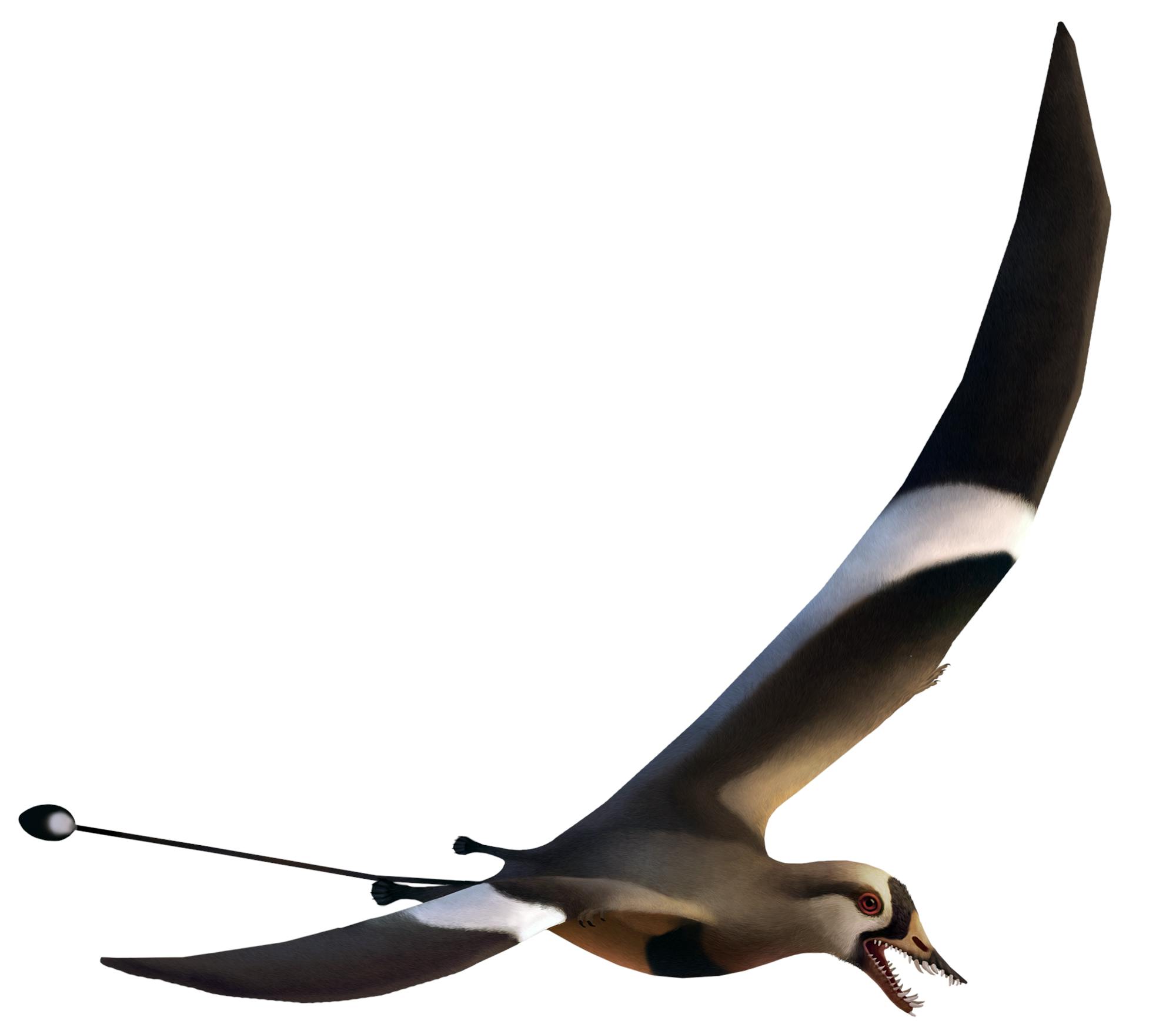


A long-tailed fish-eating pterosaur named Qinglongopterus guoi was a rhamphorhynchid that lived in what is now Hebei Province, northeastern China, 160 million years ago. Qinglongopterus is known from the Middle Jurassic Tiaojishan Formation, famous for its excellent preservation of many dinosaurs and pterosaurs.
The name Qinglongopterus comes from Qinglong County, Hebei Province where the specimen was found, and the Greek word “pteros” meaning wing. The species name honors Chen Guo who offered the specimen for research.
Qinglongopterus is known from a single articulated specimen preserving nearly the entire animal, although bones from the skull were damaged and lost during collection. The skull is long and tapering, with several conical teeth pointing slightly forward, quite similar to what's seen in Rhamphorhynchus. The vertebral column in the neck, back, and hips is almost exactly the same length as what's seen in many specimens of Rhamphorhynchus, but the skull is proportionally shorter, being only about one-fourth of the length of the neck, back, and hip vertebrae rather than about one-third as is seen in Rhamphorhynchus. In addition to a shorter skull, Qinglongopterus also has proportionally shorter wings than what's seen in Rhamphorhynchus. Like all rhamphorhynchids, Qinglongopterus had a long tail, and may have had a vertical fin on the end, and like all pterosaurs, Qinglongopterus as covered in a coat of hair-like fibers.
There's a lack of fusion seen in many areas of the skeleton indicating that the specimen was not fully mature when it died. The specimen has a wingspan of about 34 cm (1 ft) but was likely larger when fully grown. The scientists who described the specimen suggested that the proportionally small skull would probably be retained into adulthood by referencing the well-documented growth stages of Rhamphorhynchus.
Qinglongopterus is a rhamphorhynchid that is most closely related to Rhamphorhynchus which lived approximately 10 million years later and is preserved in the Solnhofen Limestone of Germany. It's so similar to Rhamphorhynchus in fact, that it may be its direct ancestor. The Tiaojishan Formation and Solnhofen Limestone have a very similar fauna of long-tailed pterosaurs. They both preserve many similar species, each having anurognathids, scaphognathines, and rhamphorhynchines, although the Tiaojishan preserves a large number of wukongopterids and the Solnhofen preserves some of the earliest short-tailed pterosaurs in the fossil record.
